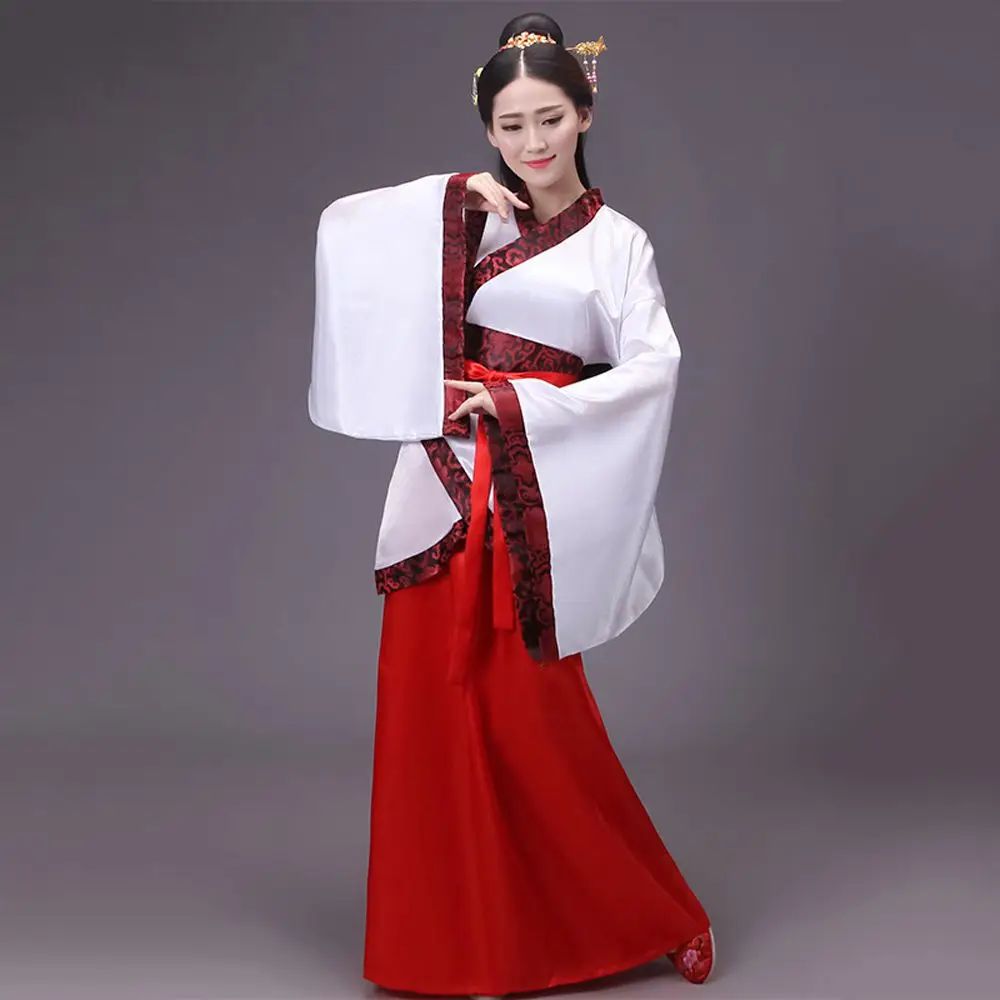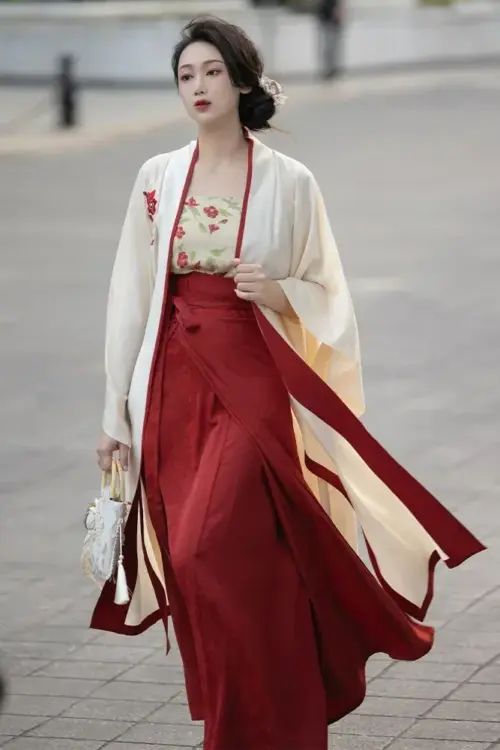The Evolution of Hanfu: From Tradition to Modernity
Traditional Hanfu vs. Hanfu moderno: A Journey of Evolution
Hanfu, the traditional attire of the Han Chinese, has undergone a remarkable transformation over the centuries. While traditional Hanfu embodies the essence of ancient Chinese culture, modern Hanfu has emerged as a vibrant expression of contemporary fashion.


Characteristics of Traditional Hanfu
Traditional Hanfu, dating back to the Zhou Dynasty (1046-256 BCE), was characterized by its intricate designs, flowing fabrics, and elaborate accessories. The garments were typically made from silk, cotton, or hemp and featured a wide range of colors and patterns. Traditional Hanfu was worn by people of all social classes, from the emperor to the commoner.

Decline and Resurgence
In the 17th century, the Manchu rulers of the Qing Dynasty imposed their own clothing style on the Han Chinese. As a result, Hanfu gradually fell out of fashion and was replaced by the Manchu-style clothing known as qipao. However, in recent decades, there has been a resurgence of interest in traditional Hanfu. This revival has been driven by a desire to reconnect with Chinese cultural heritage and a growing appreciation for the beauty and elegance of Hanfu.
Features of Modern Hanfu
Modern Hanfu, while inspired by traditional designs, has evolved to meet the needs of contemporary society. Modern Hanfu garments are often made from more durable and comfortable fabrics, such as polyester and nylon. They also feature simplified designs and more modern silhouettes.
Differences in Accessories
One of the most significant differences between traditional and modern Hanfu is the use of accessories. Traditional Hanfu was typically worn with a wide range of accessories, including hats, belts, and jewelry. Modern Hanfu, on the other hand, is often worn with more minimalist accessories, such as scarves and hairpins.
Cultural Reflection
The evolution of Hanfu from tradition to modernity reflects the changing cultural landscape of China. Traditional Hanfu represents the rich heritage of the past, while modern Hanfu embodies the vibrant spirit of the present. Both forms of Hanfu serve as a testament to the enduring beauty and adaptability of Chinese culture.
Hanfu in the Modern Era: Blending Tradition and Style
Resurgence of Hanfu
In the realm of Chinese fashion, Hanfu, the traditional attire of the Han people, has experienced a remarkable resurgence in recent years. While traditional Hanfu embodies the essence of ancient Chinese culture, modern Hanfu has emerged as a vibrant fusion of tradition and contemporary style.
Timeless Elegance of Traditional Hanfu
Traditional Hanfu, with its intricate designs, flowing fabrics, and elaborate accessories, evokes a sense of timeless elegance. Its roots can be traced back to the Han dynasty (206 BCE – 220 CE), and each dynasty that followed left its unique mark on its evolution. From the graceful robes of the Tang dynasty to the opulent garments of the Ming dynasty, traditional Hanfu showcases the artistry and craftsmanship of its makers.

Eclectic Modern Interpretations
In contrast, modern Hanfu embraces a more eclectic approach. While it retains the fundamental elements of traditional Hanfu, such as the wide sleeves, long skirts, and cross-collar design, it incorporates modern fabrics, colors, and patterns. This fusion creates a fresh and contemporary aesthetic that appeals to a wider audience.
Versatility of Modern Hanfu
One of the key differences between traditional and modern Hanfu lies in their intended use. Traditional Hanfu was primarily worn for formal occasions and ceremonies, while modern Hanfu has become more versatile. It is now commonly seen in everyday settings, such as festivals, cultural events, and even as casual wear.

Factors Driving the Resurgence
The resurgence of Hanfu in the modern era can be attributed to several factors. Firstly, there has been a growing interest in Chinese culture and history, both within China and internationally. Secondly, the rise of social media has provided a platform for Hanfu enthusiasts to share their passion and inspire others.
Cultural Identity and Pride
Moreover, modern Hanfu has become a symbol of cultural identity and pride for many Chinese people. It represents a connection to their heritage and a celebration of their unique cultural traditions.
Future of Hanfu
As Hanfu continues to evolve, it is likely to blend elements of tradition and modernity. Designers are constantly experimenting with new materials, colors, and designs, creating a diverse range of Hanfu styles that cater to different tastes and preferences.
The Revival of Hanfu: Preserving Cultural Heritage in a Contemporary World
Cultural Resurgence
In the realm of Chinese fashion, the revival of Hanfu, the traditional attire of the Han Chinese, has sparked a vibrant cultural resurgence. While traditional Hanfu embodies the essence of ancient China, modern Hanfu has emerged as a contemporary interpretation of this timeless heritage.
Significato storico
Traditional Hanfu, with its intricate designs, flowing fabrics, and vibrant colors, reflects the aesthetics and craftsmanship of bygone eras. Its origins can be traced back to the Zhou Dynasty (1046-256 BCE), where it served as a symbol of social status and cultural identity. Each dynasty brought its own unique variations, resulting in a rich tapestry of styles and designs.

Modern Adaptations
In contrast, modern Hanfu draws inspiration from traditional forms while incorporating modern elements. It often features simplified designs, lighter fabrics, and a wider color palette. This adaptation allows for greater comfort and versatility, making it more suitable for everyday wear. Modern Hanfu also embraces contemporary fashion trends, such as the use of prints, embroidery, and accessories.

Symbol of National Pride
The revival of Hanfu has been driven by a growing appreciation for Chinese culture and heritage. It has become a symbol of national pride and a way for people to connect with their roots. Traditional Hanfu is often worn for special occasions, such as festivals, weddings, and cultural performances. Modern Hanfu, on the other hand, has gained popularity as a fashionable and stylish choice for everyday wear.
Impact on the Textile Industry
The resurgence of Hanfu has also had a positive impact on the Chinese textile industry. Traditional Hanfu requires specialized fabrics and craftsmanship, which has led to a revival of traditional weaving and dyeing techniques. Modern Hanfu, with its wider range of materials, has also stimulated innovation in the textile industry.
Community and Connection
Furthermore, the revival of Hanfu has fostered a sense of community among its enthusiasts. Online forums and social media groups have emerged, where people share their knowledge, designs, and experiences. This has created a vibrant and supportive network that promotes the appreciation and understanding of Hanfu culture.
Conclusione
In conclusion, the revival of Hanfu, both traditional and modern, represents a vibrant cultural resurgence in China. Traditional Hanfu preserves the essence of ancient Chinese aesthetics, while modern Hanfu offers a contemporary interpretation that resonates with modern sensibilities. Together, they embody the enduring legacy of Chinese culture and its continued relevance in the contemporary world.
